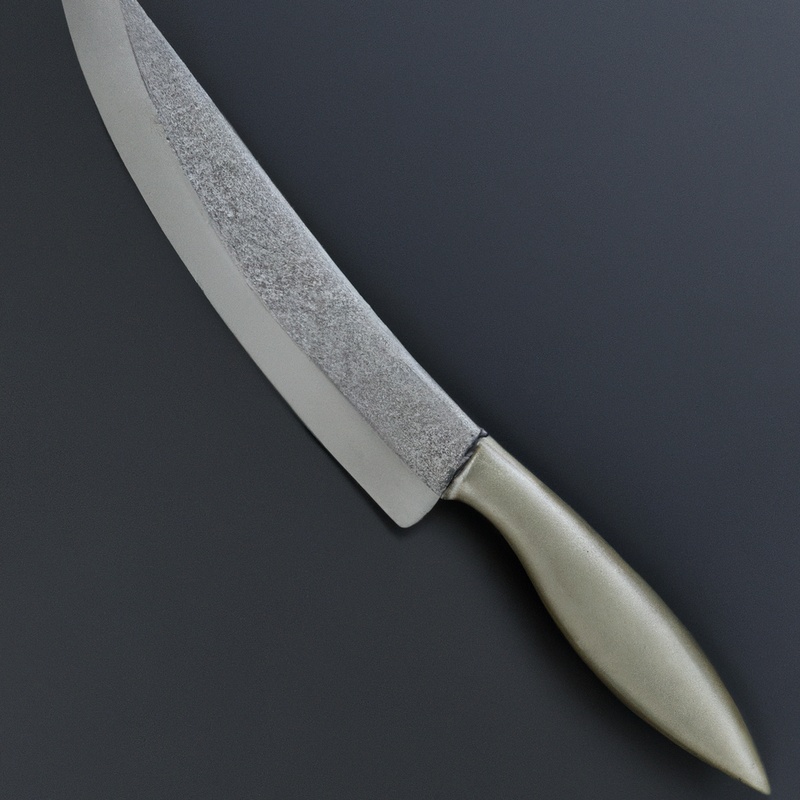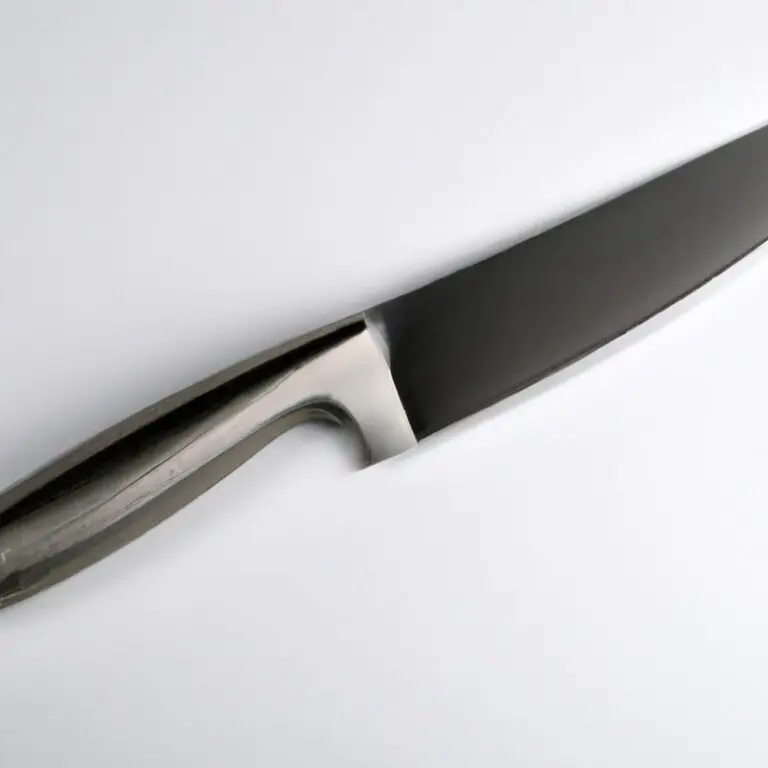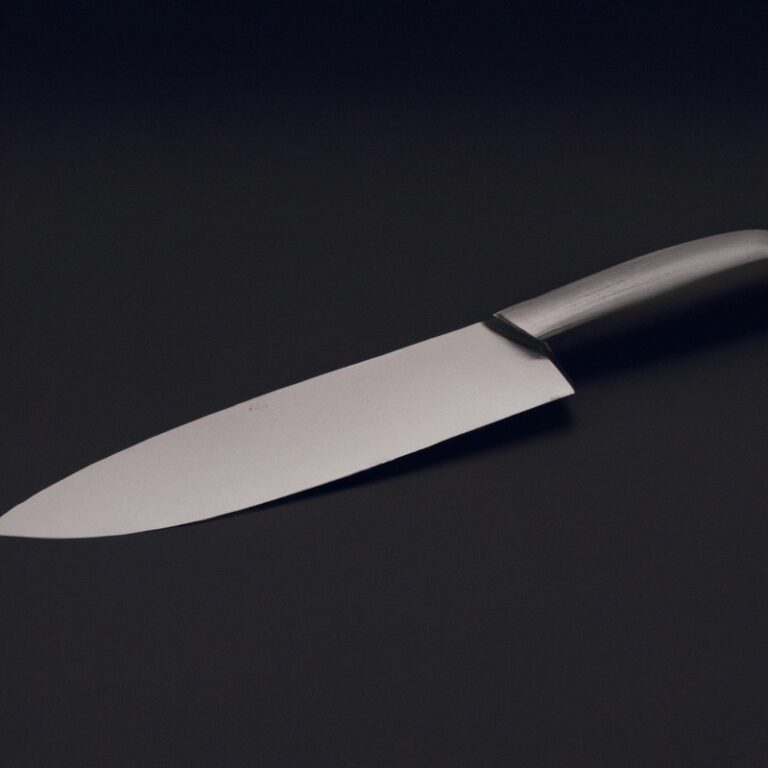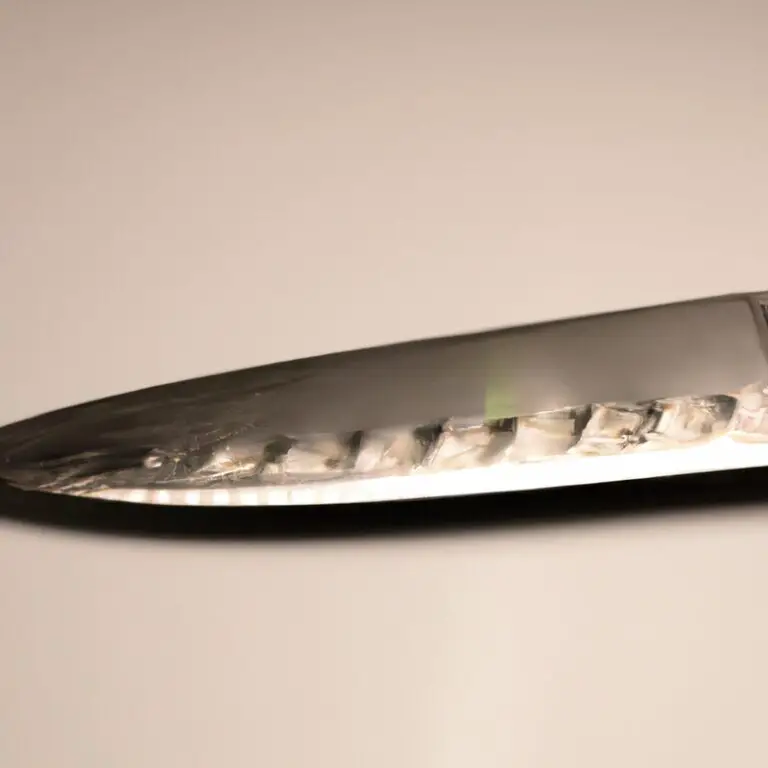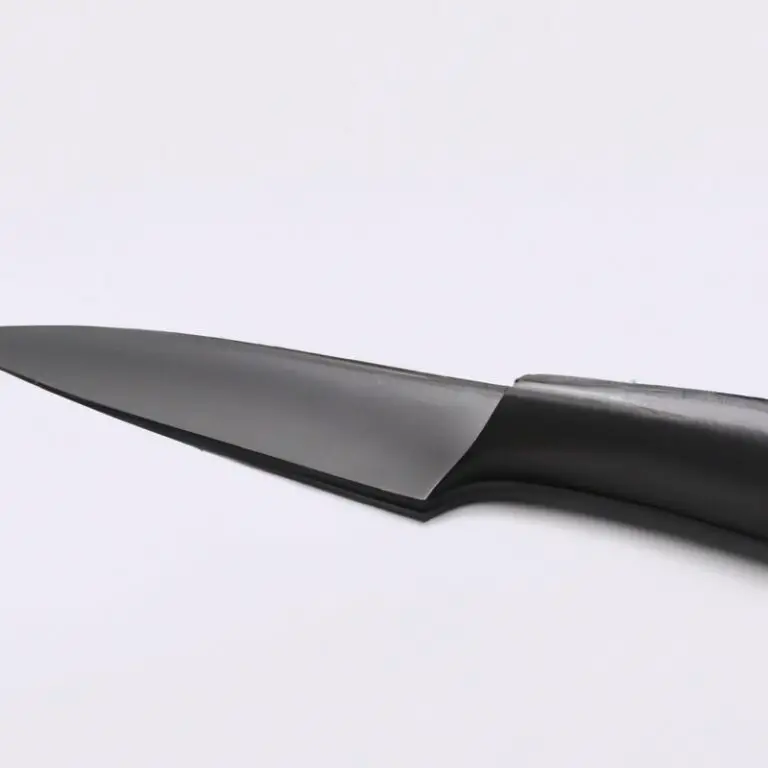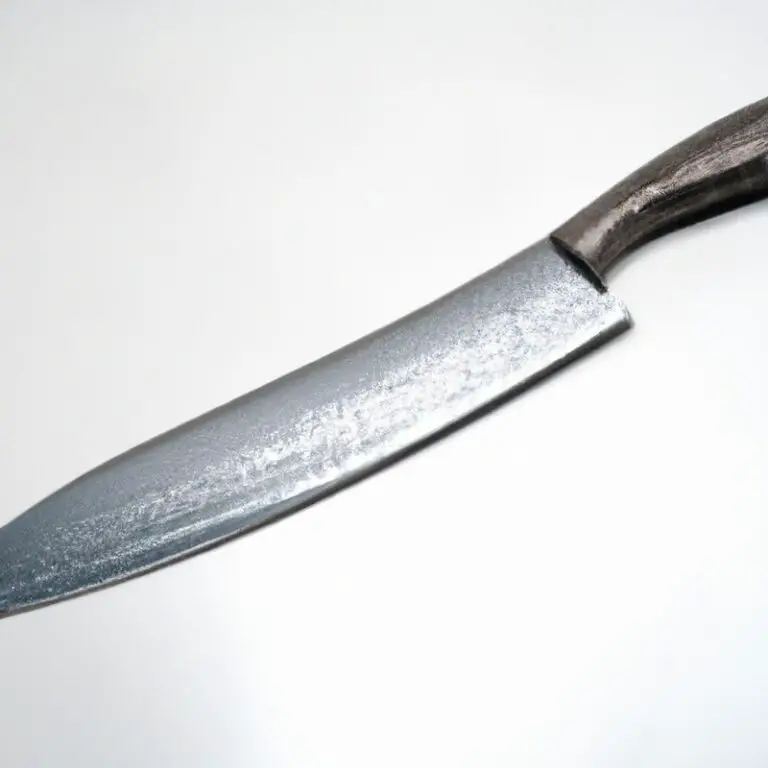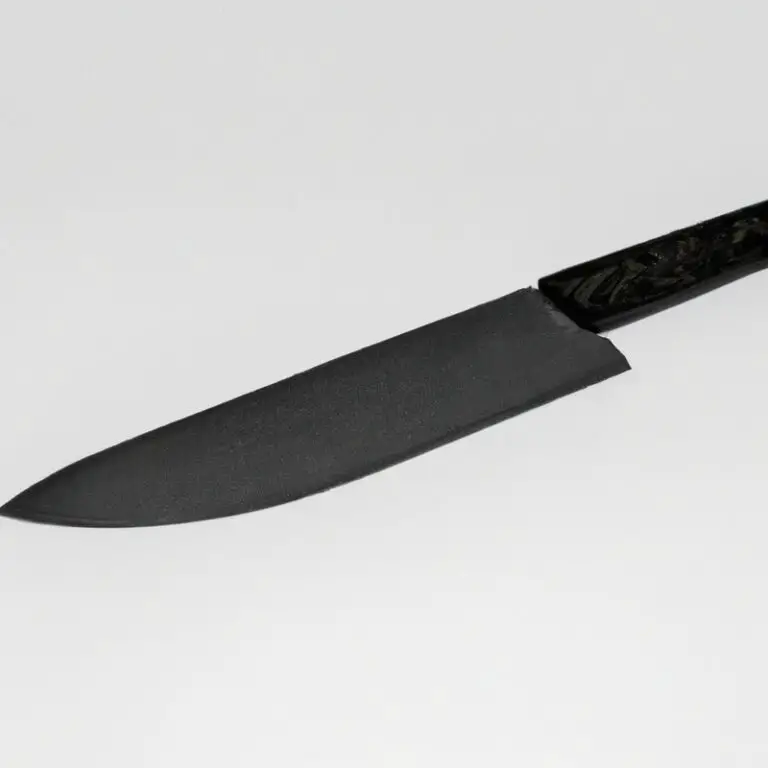How To Prevent Food From Sticking To The Blade Of a Gyuto Knife? Easy Fix!
Key Takeaways:
- Keep the blade of your Gyuto knife oiled to prevent sticking and ensure smooth slicing
- Use a proper cutting technique, with a rocking motion, to prevent food from getting caught on the blade
- Clean your Gyuto knife carefully after each use, wiping the blade with a soft cloth or towel
- Store your Gyuto knife in a safe and dry location to avoid rust or damage, which can lead to sticking and other issues.
When it comes to prepping food, the Gyuto knife is a staple in any kitchen. However, it’s not uncommon for food to stick to the blade, making it difficult to work with and affecting the quality of your meal.
But fear not, there are simple techniques you can use to prevent this from happening.
From choosing the correct cutting technique to using a proper cutting board, lubricating the blade, and selecting the right Gyuto knife blade for specific foods, we’ve got you covered! Keep reading to learn how to keep your Gyuto knife blade sharp and prevent food from sticking.
| Gyuto Knife Blade Sticking Prevention Tips |
|---|
| 1. Use a high-quality Gyuto knife made of a non-stick material such as ceramic or PTFE-coated steel. |
| 2. Keep the blade clean and dry while cutting, wiping it with a cloth after each use or wash. |
| 3. Avoid cutting foods with high starch content, like potatoes or sweet potatoes, as this can cause sticking. |
| 4. Dip the blade in water or oil before cutting particularly sticky foods such as raw fish, cheese or meat. |
| 5. Use the correct cutting technique. For example, when thinly slicing, make sure to use long strokes with a gentle pressure. |
| 6. Sharpen the blade regularly to keep the cutting edge in good condition, which helps produce clean cuts and prevents sticking. |
Understanding the Benefits of a Sharp Gyuto Knife Blade
Understanding the Benefits of a Sharp Gyuto Knife Blade A sharp Gyuto knife blade has numerous benefits. A sharp blade cuts through food effortlessly, resulting in clean cuts.
This lessens the chances of food sticking to the blade, ensuring overall smoother cutting.
A sharper knife requires less force to cut through, reducing the possibility of squashing the food. This increases the precision and accuracy of the cuts, resulting in a better-looking meal.
Additionally, using a sharp Gyuto knife blade requires less effort, reducing fatigue and minimizing the risk of injury.
Overall, investing in a sharp Gyuto knife blade is worthwhile as it allows for a pleasant and effortless cutting experience.
Common Causes of Food Sticking to a Gyuto Knife Blade
Some common causes of food sticking to a Gyuto knife blade include using a dull blade, cutting with the wrong technique, using the wrong type of cutting board, and not lubricating the blade properly. A dull blade can cause the food to tear and leave debris on the blade, making it harder for the food to slide off.
Cutting with the wrong technique can cause the food to stick to the blade and prevent smooth cuts.
The use of a wrong cutting board, such as a glass or ceramic board, can cause the food to stick to the surface, leading to debris on the blade. Proper lubrication of the blade is also important to prevent food from sticking, especially when cutting foods with high water content.
How to Choose the Correct Cutting Technique for Different Food Items
To choose the correct cutting technique for different food items, consider the texture, size, and shape of the food. Soft foods like tomatoes require a gentle slicing motion, while hard vegetables like carrots may need more forceful chopping.
Use a rocking motion for herbs and leafy greens, and use a sawing motion for crusty bread to avoid crushing it.
For protein like meat and fish, it’s important to slice against the grain to prevent toughness. Fish should be cut with a pulling motion to avoid tearing the delicate flesh.
Remember to use a sharp blade and keep the knife clean to prevent food from sticking.
Using a Proper Cutting Board to Minimize Food Sticking
Using a proper cutting board is essential in preventing food from sticking to the blade of a Gyuto knife. Some materials like glass or hard plastic can damage the blade’s edge and cause food to stick.
Opt for softer materials like wood or bamboo as they are more gentle on the blade and provide a natural non-stick surface.
It’s crucial to choose a board that is the right size for your knife, enabling you to glide the knife in a smooth motion, reducing the risk of food sticking to the blade. Clean the cutting board thoroughly after each use to prevent cross-contamination and ensure it is always dry before storing it.
A good cutting board, paired with a sharp Gyuto knife blade, can make for a seamless and efficient food preparation experience without the frustration of food sticking.
Lubricating the Blade to Prevent Food Sticking
Lubricating the blade of a Gyuto knife is an effective way to prevent food from sticking to it. There are several lubricants available, including vegetable oil, canola oil, and mineral oil.
Before each use, apply a small amount of oil to the blade, and then wipe it clean with a paper towel.
This will create a protective barrier between the blade and the food, making it easier to cut and preventing the food from sticking to the blade. Additionally, regularly lubricating your knife blade can help to maintain its sharpness and prevent rust or corrosion.
However, be sure not to use too much oil, as this can cause the blade to become slippery and potentially dangerous to handle.
The Importance of Maintaining a Clean Blade for Best Results
Maintaining a clean blade is crucial for the best results when using a Gyuto knife. A dirty or sticky blade not only affects the quality of the cut but also significantly reduces the lifespan of the blade.
Food particles can cling onto the blade during cutting, which can eventually lead to corrosion and rust.
These issues can cause the blade to lose its sharpness and increase the risk of contamination in food items. To keep the blade clean, it is essential to wipe it down with a clean cloth after every use.
For tough stains or difficult-to-remove substances, use baking soda or vinegar to clean the blade, followed by washing it in warm soapy water.
It is important to dry the blade thoroughly before storing it. Additionally, regular sharpening of the blade is necessary for optimal performance of the knife.
It is recommended to sharpen the blade once every six months, depending on usage.
By maintaining a clean blade, the Gyuto knife can provide excellent results with each use, making the preparation of meals a smooth and enjoyable experience.
Choosing the Right Gyuto Knife Blade for Specific Foods
Choosing the Right Gyuto Knife Blade for Specific Foods: When selecting the right Gyuto knife blade for specific foods, it’s important to consider the food’s texture and density. For instance, if you’re cutting hard vegetables or meat with bones, you’ll need a thicker blade with a wider angle to achieve the necessary force.
On the other hand, thinner blades with narrower angles excel at slicing softer foods like herbs, fruits, and fish.
Furthermore, a scalloped edge reduces friction and adhesive properties on starchy vegetables and cheese, making it the optimal blade for these foods. The length of the blade also matters.
It’s generally recommended to use a longer blade for larger cuts of meat and a shorter blade for intricate cutting tasks with smaller vegetables or fruits.
Remember to choose the right blade that caters to the specific food item you’ll be preparing to avoid food sticking to the knife blade.
The Science behind Non-Stick Coatings for Gyuto Knife Blades
Non-stick coatings for Gyuto knife blades work by creating a layer of protection between the blade and the food. These coatings prevent food particles from adhering to the surface of the blade, making it easier to cut through food items without sticking.
The most common non-stick coatings for Gyuto knife blades are made from ceramic, silicone, or PTFE, a type of plastic.
These coatings offer a low-friction surface that reduces the amount of force needed to cut through food. However, it’s important to note that non-stick coatings do not make the blade completely resistant to food sticking.
Proper lubrication techniques, cutting techniques, and maintenance of the blade are still necessary to achieve optimal performance.
Overall, the science behind non-stick coatings for Gyuto knife blades provides a helpful solution for reducing food sticking and improving the efficiency of food preparation.
Dry Cutting vs. Wet Cutting and Its Effect on Stickiness
When it comes to preventing food from sticking to the blade of a Gyuto knife, choosing the right cutting technique is crucial. Dry cutting involves cutting food without any lubrication, while wet cutting involves using water or oil to reduce friction.
While both techniques have their benefits, wet cutting is generally more effective in preventing stickiness.
Water helps to wash away any stray food particles, reducing the likelihood of them sticking to the blade. Oil, on the other hand, adds a layer of lubrication that minimizes the chances of food adhering to the blade.
However, keep in mind that wet cutting can lead to rust on the blade if not dried properly after use.
Ultimately, the choice between dry cutting and wet cutting depends on personal preference and the type of food being cut. Experiment with both techniques to find which works best for you and your Gyuto knife.
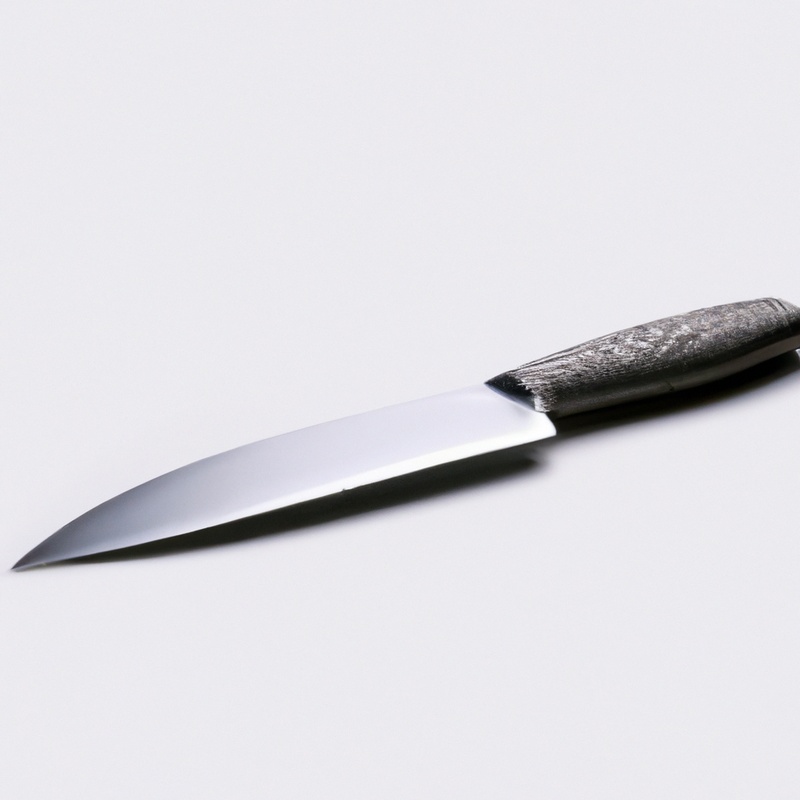
How to Store Gyuto Knives to Retain their Sharpness and Performance
To retain the sharpness and performance of Gyuto knives, proper storage is essential. Here are some tips to keep your Gyuto knives in good condition:
- Store in a knife block or a knife roll – Avoid loose storage in a drawer or on a magnetic strip, as this can dull the blade over time.
- Keep knives dry – Moisture can cause rust and corrosion, so make sure the blade is completely dry before storing.
- Use blade guards or sheaths – This can prevent nicks and scratches on the blade, preserving its sharpness and appearance.
- Avoid contact with other tools – Keep knives separate from other kitchen tools, as they can damage the blade or dull the edge.
By following these guidelines, your Gyuto knife will last longer and maintain its sharpness, ensuring optimal performance and functionality when used in the kitchen.
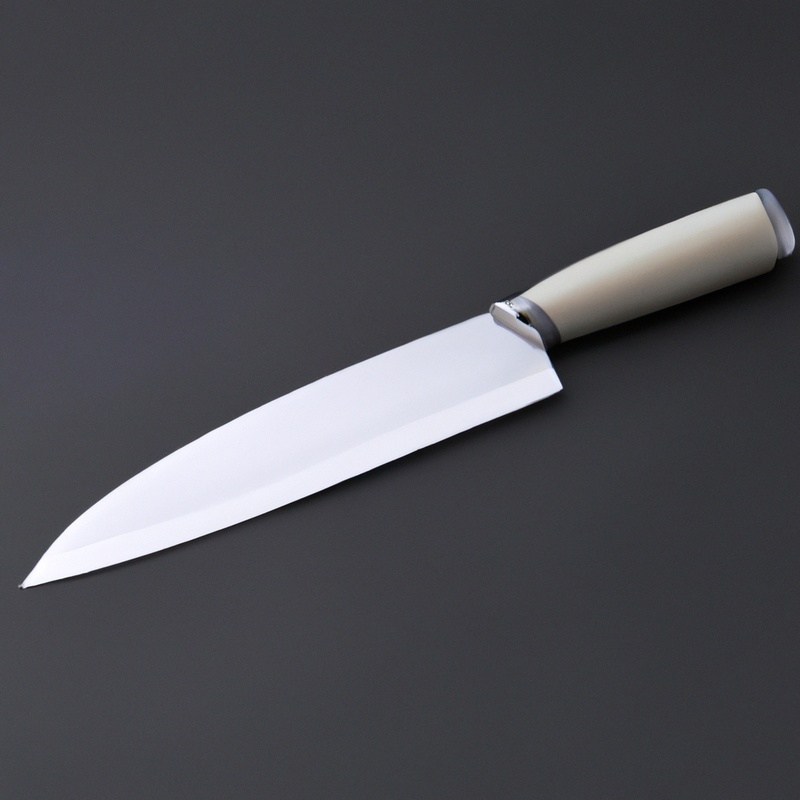
Final Verdict
Preventing food from sticking to the blade of a Gyuto knife is crucial for achieving precise and efficient cuts in the kitchen. Using the correct cutting technique, a proper cutting board, lubricating the blade, and maintaining a clean edge are essential steps to minimize food sticking.
Additionally, choosing the right Gyuto knife blade for specific foods and understanding the science behind non-stick coatings can significantly improve performance.
Remember to store your Gyuto knives properly to retain their sharpness and extend their longevity. By implementing these tips and techniques, you can elevate your culinary skills and reduce frustration in the kitchen.
So, sharpen your knives, practice your skills, and enjoy a hassle-free cooking experience with a non-stick Gyuto knife blade.

